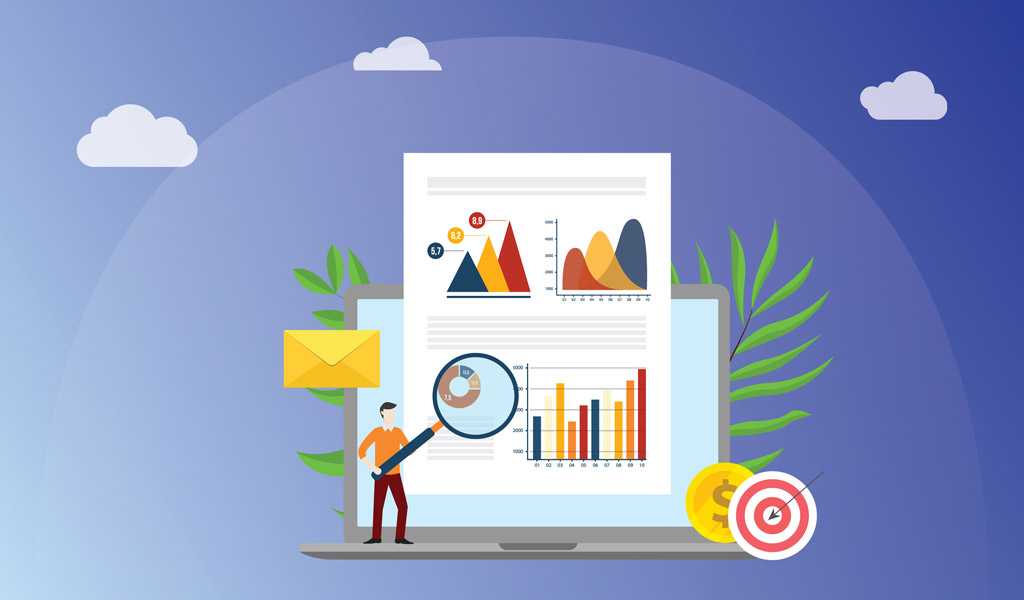Data-Driven Company Culture. It’s often said that we’re currently in the age of Big Data. Data is the new currency of the technological economy. Many companies are just starting to scratch the surface when it comes to unlocking the true potential hidden in their data. By diving into our data, we can find key insights about customer behavior, buy intentions and actions, market trends, and shifting customer perspectives. Armed with these insights, we can begin to shape our companies into ones that deliver customer needs every time. You can fix customer problems before they emerge and establish your company as a trusted authority in the industry. And of course, boost your revenue.
Becoming a data-driven company involves a lot more than simply installing some data analysis software. It starts within the culture of the company. If you can create a data-centric company culture, you’ll always find new insights and growth opportunities. With data science (and many other fields), your success starts to compound when you begin your journey. So, let’s start your journey to becoming a data-centric company right down to the staff level. Here are our nine steps you should follow to promote and create a data-driven company culture. Let’s get started.
Obstacles to cultivating a data-driven culture
Before we delve into what you should focus on to create a data-driven culture, it’s a good idea to look at the obstacles you may encounter. Obstacles could make or break your success, so it’s essential to be aware of them so you can address them if they arise.
Communicating How We Can Use Data to Win
It would help if you focused your data science projects in areas where they can produce the most value (have the highest ROI). A critical issue that crops up is that many employees don’t think moving toward a data science approach is guaranteed to be effective. But If you can’t get employee buy-in, then you’ll fail before you begin. An excellent way to counter this is to focus on high-value targets and prove that a data science approach will help you win.
Your Company Backward Thinking Approach
Do you regularly discuss what is going to happen tomorrow? Or do you mainly focus on what happened yesterday and what is happening today? Thinking forward is essential if you want to promote a data-driven culture. Data science is always focused on how you can utilize the past to predict the future. If your company mindset is always focused on the past, then it can feel like you’re speaking a different language when you start considering data analysis initiatives.
The Decline in Data-Driven Mindset
A recent study called the Big Data, and AI Executive Survey 2019 reported some alarming findings. The percentage of companies that identify as data-driven has declined over the last three consecutive years. In 2017, 37% of companies identified as data-driven, but this fell to 32% in 2018 and then 31% in 2019.
At face value, this can look like companies today think that being data-driven is no longer essential and are trying to distance themselves from it. However, statistics also show that an increased number of companies are implementing AI and other data-driven technologies, so this can’t be true. So, what gives? If we had to guess, we’d say that as time has gone on, companies have opened their eyes to just how much goes into being a data-driven company, and they are judging themselves by harsher metrics.
For example, let’s say that five years ago, you knew very little about nutrition. Suppose someone asked you whether a Double Cheeseburger from McDonald’s is healthy. In that case, you might say, “There are more nutritious foods, but it contains fat, protein, carbs, and a few vegetables (lettuce, onions, tomato). It’s fairly balanced”. However, five years on and more nutritional knowledge later, you might have an entirely different perspective. You might say that processed meats are usually bad for you, that refined carbs are much worse than whole grain carbs, regardless of calorie count, and so on. The double cheeseburger remains the same, but your knowledge and understanding have changed, and this has changed your perspective.
Depending on where your company’s perspective lies in data science, you could have different challenges. For example, if you have a few data analysis solutions that you regularly use, you could still struggle to get more through the door and truly become a data-centric company. Why? It could be that your staff are overconfident (they already perceive the company as a data-driven company and think there’s no more work to be done). The opposite could also be true; they might think that the mountain they have to climb is too high, and the current data science tools don’t add more value. In the latter scenario, employees might think embarking on a data-driven cultural overhaul is needlessly risky and time-consuming.

9 Steps You Should Follow To Promote and Create A Data-Driven Company Culture
1. A Phased Approach
Many companies get excited about pushing a data-driven culture and want to do everything right away. Remember, a lot of the journey is about shifting people’s perspectives, which rarely happens overnight. You’re also much more likely to get push back if you try to do too much at once. Some teams might welcome new data-analysis tools with open arms, but others might push back hard. For the latter, this could be because they see these tools are things that take away vital aspects of their jobs.
For example, Database Engineers increasingly have their job automated, and many of these employees may be worried about the future of their career. Will it exist in a few years if it can all be automated? These teams could push back, and it might give other teams to push back too. And before you know it, you can see an anti-data-centric culture on your hands. A culture that is suspicious or resistant to data-driven approaches is much harder to overcome than a neutral one.
Our advice would be to take an iterative and phased approach, tackling individual data projects and moving on to the next when one is completed.
2. Expanding Data Access
For your company to become data-driven, your staff have to become data-hungry. How do you make them data-hungry? By allowing them more access to data tools in their job. If the staff at every level can see key performance metrics about their team or even their individual performance, they will start thinking in a more data-centric way. This shift in thinking is key to getting buy-in for data science initiatives.
Teams should also be encouraged to share data reports with each other to expand knowledge and insights. For example, the customer service team might be interested that the marketing team has identified that the business is currently getting many more customers from one market segment. Sure, it’s not essential to the customer service rep’s job, but it’s interesting and involves them in the conversation. It uses data to establish relationships and deepen collaboration.
3. Increasing Data Literacy Within Your Company
If you want to cultivate a data-driven culture, then you need to improve data literacy. This not only means understanding terms like data-lake, data science, APIs, AI, and so on but understanding how to interpret data. A study by NCES found that the United States ranks 21 out of 23 countries in data literacy, which it classes as data interpretation and problem-solving skills. Put simply, if you put data or reports in front of an employee, they have to know how to read it, or they’ll never become engaged in data as a concept or an asset.
The responsibility for improving data literacy used to lie in schools, where students would (hopefully) come away with a solid understanding of calculus, algebra, probability, and statistics. You don’t need to be a mathematician, but you should know how to interpret different classes of data and use them to make informed decisions. However, many businesses find that their employees lack these skills, so the responsibility has now shifted to companies to educate staff. Ideally, you should create training courses and workshops in data literacy for employees of all levels.

4. Culture Starts at the Very Top
Companies who excel in cultivating a data-driven culture have high ranking employees that set an expectation that decisions are tethered to data. These senior staff members lead by example and treat data as a regular part of the business rather than as something exceptional or groundbreaking. How do the leaders in your company feel about data or approach data initiatives?
5. Eliminate Basic Access Issues
Like so many areas of business, frictions cause breakdowns and harm progress. A common complaint that employees have is that they struggle to access basic data. Despite dedicated efforts to democratize data within organizations, this complaint still persists. Essentially, if you make it hard for your employees to access data, then they’ll become resistant to data-driven projects. They won’t have a high degree of trust in the company’s ability to lead on these projects.
6. Training Should Be Time Appropriate
A key mistake that businesses make when they embark on digital transformation projects is that they conduct training sessions well before employees will need to use the new solutions. By the time employees have to use data-analysis software, they have forgotten how to use it. This is a massive problem because it can slow down your adoption considerably. Employees are often very busy, and if they have to choose between learning new software or defaulting to the way they usually do something, they’ll opt for the latter. Again, this comes down to friction. Your data-driven transformation should be as frictionless as possible.
7. Identify Your Silos and Destroy Them
Silos are the groups, teams, or departments within your organization that doesn’t share knowledge or data with other parts of the organization. Silos get in the way of progress and harm collaboration efforts, and you should try to eliminate them. One of the key benefits of being a data-driven company is that each team can bring new data and insights to the table. Each team can share the knowledge that will shape the future decisions of the company. If teams don’t share knowledge, then they are all working towards separate goals, and the business will suffer.
8. Make an Insights Newsletter
The more you expose your employees to data and the insights it provides, the more they will become fans of data-centric approaches. A newsletter that discusses key insights found in your data is a great way to show off your new data-driven approach and engage all employees in the journey.
9. Focus on Privacy and Ethics
People are often suspicious of how companies are handling data. They often assume that companies are collecting more data than necessary or that the data is being mishandled. When companies mishandle data, it’s usually because employees are unaware of the data regulation policies or the company’s code of ethics. To combat this, you must make sure that you install policies and codes of ethics and that all employees understand them.




















